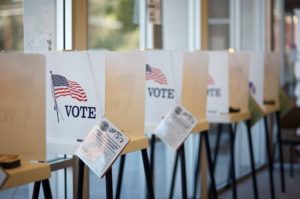
Voter Turnout in Acton & North Hollywood
Voting is a critical part of political participation and civic engagement in a democracy. According to a recent Pew Research Center survey, 70% of Americans
Variable Definitions:
Cellular Data Plan Only: The percentage of households that only have access to the internet through a cellular data plan
No Computer Access: The percentage of households in which no one in the household owns a computer, including a desktop, laptop, tablet or smartphone
No Internet Access: The percentage of households that do not have access to the internet (types of internet include broadband, dial-up, or a data plan for a smart phone)
Smartphone Only : The percentage of households that do not own a computer besides a smartphone
Source:
American Community Survey, 5-year estimates, Table S2801
Years Available:
2017 – 2023
*Note: Each year of available data shown above is a 5-year estimate, or an average of data collected over a five year period. 5-year estimates are used to increase the reliability of the data at small geographies like neighborhoods and census tracts. The years shown on the NDSC map represent the final year of the five year average (e.g. “2010” represents 2006-2010 data, “2011” represents 2007-2011 data, and so on). For the most impactful comparison of data over time, the ACS recommends comparing non-overlapping years (e.g. 2010-14 with 2015-19).
Computer & Internet Access
Across the globe, access to a computer and internet connection is becoming increasingly important. In 2011, the United Nations Human Rights Council published a report stating that internet access is an important enabler of freedom of opinion, expression and progress of society as a whole. Internet and computers are playing an increasingly important role in schools and education, as well as for things like employment searches, emergency alerts, and news/information dissemination.
The popularization of smartphones has helped to bring internet and computer access to a wider audience. However, while smartphones can help connect people socially and provide access to news and emergency alerts, they may be less helpful for educational and job seeking purposes.

Voting is a critical part of political participation and civic engagement in a democracy. According to a recent Pew Research Center survey, 70% of Americans

Investing in arts and culture is increasingly being recognized as a catalyzing force for community development. Strategies to boost the visibility of arts and culture
